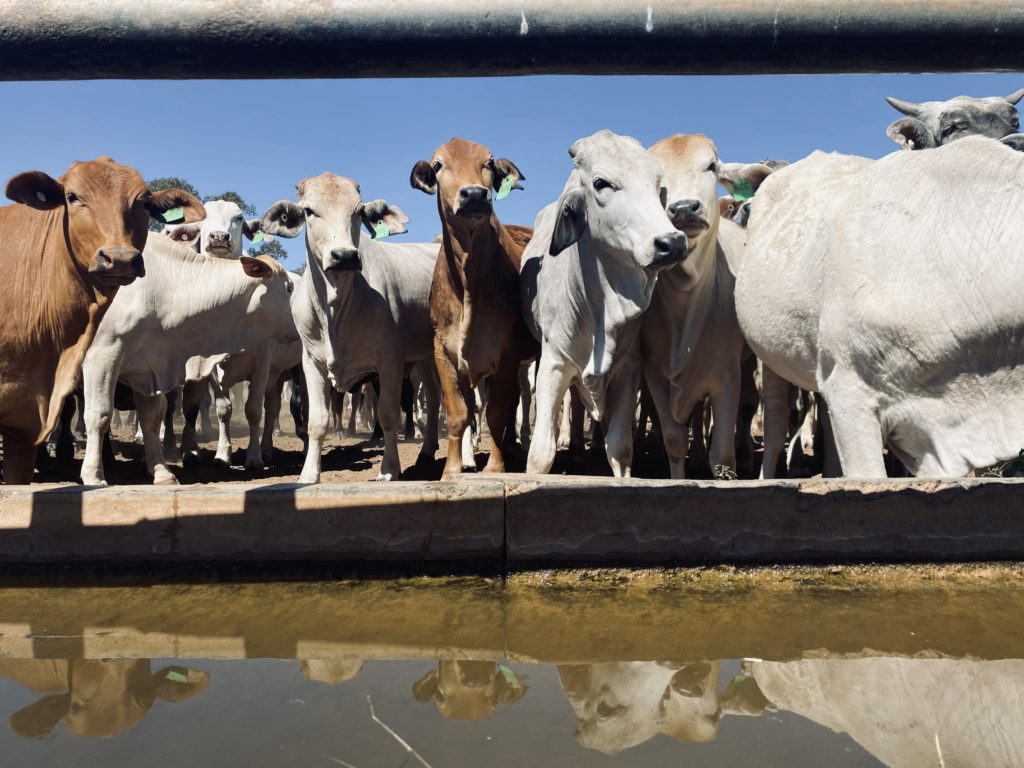AUSTRALIAN AGRICULTURE: METHANE AND CARBON SEQUESTRATION

ACTION FOR CLIMATE CHANGE
The challenge
It is estimated the global population will reach 10 billion by 2050, so the importance of a thriving sustainable food and agricultural sector is clear.
Urgent climate action is required to ensure the agriculture industry continues to thrive and is able to provide stable, sustainable food supplies to a growing population.
Food production will need to almost double in the next 30 years[1] to feed the population and the global demand for sustainably sourced Australian grass-fed beef is increasing.
Methane in context
Methane has been described as an Achilles heel for the livestock industry[2], as most people think that burping cows are the main contributor of methane, a potent greenhouse gas, to the atmosphere. But that is not the whole story.
Around half of Australia’s annual methane emissions come from the agriculture sector. The remaining balance comes predominantly from coal and gas production.[3]
Chemically speaking, methane is always a compound made of one carbon atom bonded to four hydrogen atoms. However, the source of methane is significant; where it comes from makes a difference in how it affects our atmosphere and climate change.
Methane emissions from grass-fed cattle form part of a natural biogenic cycle that has been around since life began. In the biogenic carbon cycle, plants assimilate carbon dioxide from the atmosphere during photosynthesis and store it as carbohydrates. Animals consume the plants and emit methane during digestion[4].
The methane emitted remains in the atmosphere for about 12 years, before it is converted back to carbon dioxide and water vapour. Though methane is transformed into another greenhouse gas, it is essential to note that the resulting carbon dioxide returned to the atmosphere is not new additional carbon dioxide; it is recycled carbon.
As long as herd emissions remain constant over time, atmospheric methane is in equilibrium, meaning that sources are balanced with sinks and no additional carbon is added to the atmosphere.
In contrast, fossil fuel methane, the gas that comes from burning fossil fuels from the Earth’s crust, represents a brand-new one-way addition of greenhouse gases to the atmosphere.
Direct action on methane
Although methane from cattle is “recycled carbon” the warming effects during its time in the atmosphere should still be recognised and reduced as much as possible.
At Packhorse we manage agricultural assets using land restoration practices – leading the way through sustainable practices in protecting and improving agricultural land.
Land restoration focuses on regenerative agricultural methods to promote above and below ground plant production and biodiversity to maximise carbon stored in vegetation and soils. Carbon-rich soils, that lock carbon out of the atmosphere, are more productive, resilient, and profitable.
Packhorse has increased its renewable energy use (e.g. solar bore pumps) and reduced enteric methane by introducing legumes into the cows’ diet. Legumes contain tannins that suppress the activity of methane-producing microbes in the gut by as much as 20%.
Increasing carbon storage and reducing methane emissions from cattle will allow Packhorse to achieve net-zero emissions by 2028.
Valuable carbon credits are an additional benefit, with the potential to provide lucrative upside for investors and landowners.
With further investment in regenerative agriculture, new farming methods and research, and development, the agriculture industry in Australia is well placed to supply the growing demand for clean, green food.
Other information
Biogenic methane is regularly cycled between atmosphere, plants and animals. This is carbon recently derived from carbon dioxide (CO2) present in the atmosphere. Over time it decays back to CO2 without adding to the concentration of CO2 in the long term. [5]
[1] https://www.nationalgeographic.com/foodfeatures/feeding-9-billion
[2] Interview with Dr. Frank Mitloehner from UC Davis, USA.
[3] Source The Conversation “Australia’s refusal to sign a global methane pledge exposes flaws in the term ‘net-zero’” Nov 3 2021
[4] Lie et al (2021) Rethinking methane from animal agriculture. CABI Agriculture and Bioscience
[5] Source Methane and other major greenhouse gases (NZ) 13 April 2021
